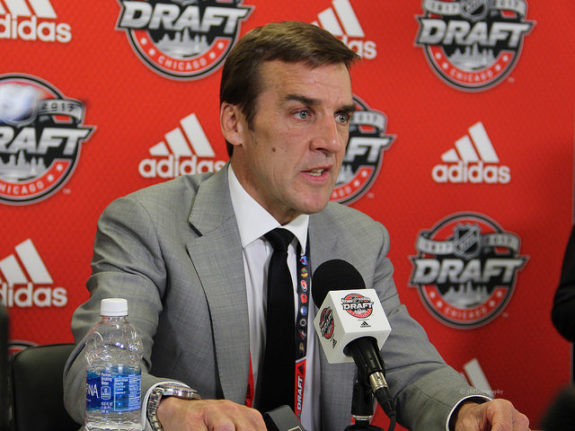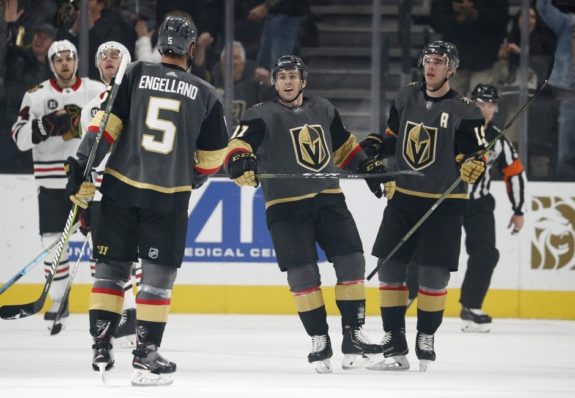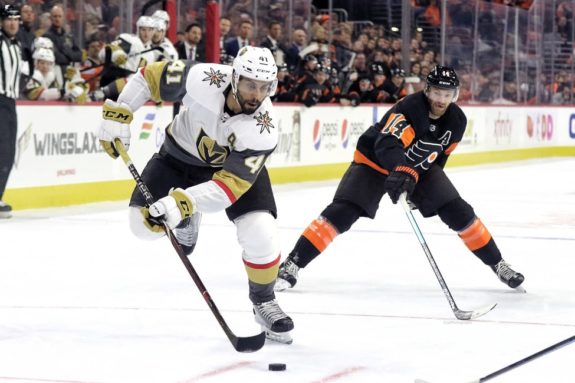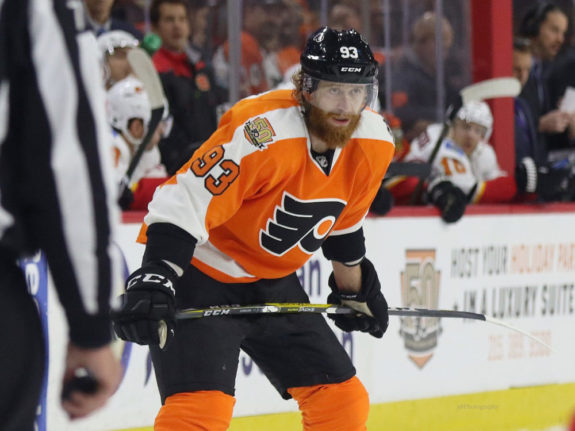It’s been nearly two years since owner Bill Foley and general manager George McPhee gouged the rest of the NHL and assembled the eventual Western Conference champion Vegas Golden Knights. No one knew at the time, but over the course of three sweltering Vegas days in June, the Golden Knights knocked the expansion draft out of the park. Unfortunately, that home run came at the expense of a few teams trying to keep their talented unprotected players out of McPhee’s hands. They failed.
Soon, the Philadelphia Flyers will be in the same position of trying to preserve their roster whilst trying not to gift the new Seattle franchise any diamonds in the rough. Teams like the Minnesota Wild, Columbus Blue Jackets and Florida Panthers found out the hard way how difficult can be.
These teams paid a premium to keep McPhee’s hands off of what they deemed crucial pieces to their success, only to see the players taken from them turn into extremely impactful pieces for a team that would win the Campbell Trophy as Western Conference champions.

George McPhee and the Vegas Golden Knights impressed as last year’s expansion team. (Amy Irvin / The Hockey Writers)
Hindsight 20/20 for These Clubs
Minnesota agreed to trade Alex Tuch; in exchange Vegas would select center Erik Haula. Alex Tuch is now the Golden Knights’ second-leading scorer whilst Haula has been a more than solid, middle-six center for the club.
Columbus decided to give up a first and a second-round pick so they could dump David Clarkson’s albatross contract off on McPhee; in exchange Vegas would select center William Karlsson. Karlsson proceeded to earn the top-line center role for the Golden Knights en route to an electric 43-goal, 78-point season in which he played every game and led the team in both categories.

Finally, and perhaps most impactful to Vegas’ success, the Florida Panthers agreed to trade right winger Reilly Smith; in exchange Vegas would select left winger Jonathan Marchessault. These two would end up being two-thirds of Vegas’ top line alongside Karlsson, and were Vegas’ top two scorers on their run to the Stanley Cup Final.
In summation, all three of these teams gave up valuable assets including high draft picks assuming Vegas would be selecting players they deemed to not be afterthoughts. It also showed how easy it is to royally mess up these expansion drafts.
How Did Vegas’ Expansion Affect the Flyers?
Luckily for the Flyers, they didn’t have an overwhelming amount of talent at the time that would necessitate any trades of this nature. Their protection list left no impact players on the board for Vegas to poach. The Flyers utilized the more common protection strategy of seven forwards, three defensemen and one goaltender.
Come expansion draft night, the Golden Knights selected center Pierre-Edouard Bellemare from the Flyers, a best-case scenario if you asked most Flyers fans.

In 2021, Seattle will conduct its own expansion draft and officially become the 32nd NHL team. Considering the rules will be the same as Vegas’ expansion, the Flyers will have to do some maneuvering, or else risk losing a highly impactful player.
The Expansion Rules
First, let’s take a look at some of the rules of the draft to determine who will be exempt from being taken in the Seattle Expansion Draft. For starter’s, any player with a no-trade or no-movement clause is automatically exempt from being drafted unless they agree to waive said clause. This removes Claude Giroux from the proceedings and will be the first protection slot used, not that the Flyers would expose him anyway.
Secondly, all first and second-year NHL players will be exempt from the draft, this will most likely keep drafted players yet to hit the big club such as Morgan Frost, Joel Farabee and Isaac Ratcliffe safe from expansion, as well.
It’s official. The NHL will add a team in Seattle for the 2021-22 season. Same expansion draft format as Vegas. Coyotes will move to Central Division. News story: https://t.co/Yy1Sicpu83
— Emily Kaplan (@emilymkaplan) December 4, 2018
Teams must expose at least one goaltender, as well as at least one defenseman under contract through 2021-22 with at least 40 NHL games the prior season or 70 games over the past two seasons. Likewise, at least two forwards who meet the same criteria must also be exposed. The full list of rules can be accessed here.
Before accounting for who the Flyers choose to protect, and assuming their current restricted free agents are re-signed, this will leave Jakub Voracek, Sean Couturier, Nolan Patrick, Oskar Lindblom, Scott Laughton, Ryan Hartman, James van Riemsdyk, Travis Konecny, Ivan Provorov, Shayne Gostisbehere, Travis Sanheim, Philippe Myers, Robert Hagg, Samuel Morin and Carter Hart all eligible to be exposed in the expansion draft.
Who Will Be Protected? What Protection Format Is Best?
First things first, let’s establish who, without a doubt, the Flyers will want to protect. As previously mentioned Giroux is a lock to be protected, as is Hart with the lone goalie protection slot. Those who almost certainly will be joining him are Couturier, Patrick, van Riemsdyk, Konecny, Provorov and Sanheim.
A lot can happen in two seasons, but it’s a fair assumption to make that these players are all locked in for the foreseeable future. Voracek was left off this list because there is a good chance the Flyers may decide that it would be better if Voracek’s expensive salary come off their books by this time.
The Flyers are also expected to make big signings in free agency this year, though it’s impossible to know who they will go after, it would seem counterproductive to sign a player just to leave him unprotected, so we will add one unknown free agent to their protected list as well.
I know at the moment, it seems like the Flyers are by far the least interesting of the 4 Philly sports teams. But I'll say this — everything I've heard over the last few months leads me to believe that they're going to look to make some big additions this summer.
— Charlie O'Connor (@charlieo_conn) March 1, 2019
After this is when things get tricky. Let’s assume that the Flyers will have to expose Laughton, Hartman, Hagg and Morin; their upsides simply won’t warrant the need for protection. If the Flyers’ free agent addition is a forward, they will need to use the seven forwards, three defensemen protection strategy, which will leave both Voracek and Lindblom unprotected, as well as one of either Gostisbehere or Myers depending on whom they prioritize.
If they add a defenseman in free agency and choose an eight skater protection list, they run the risk of exposing quite a few impact forwards and would still have to expose one of their young budding defensemen.
No matter how you cut it, the Flyers are in a tough predicament when it comes to protecting their young contributors. Utilizing the seven forwards, three defensemen strategy will probably leave the least “meat on the bone” so to speak for Seattle to pick from, but even then, they may lose a player like Lindblom, Gostisbehere, or Myers if Seattle deems an aging and expensive Voracek-he’ll be making over $8 million in his age-32 season by this time- not worth their draft pick.

If the Flyers want to sway Seattle towards taking a Laughton or Hartman type in order to keep Lindblom, Voracek, Gostisbehere and Myers, they are going to have to give up lots of draft picks to do so. If they don’t, the Flyers will either be losing one of their star wingers, an up-and-coming Lindblom, or a sure-fire top-four defenseman in Gostisbehere or Myers. General manager Chuck Fletcher will have some tough decisions to make come June 2021.